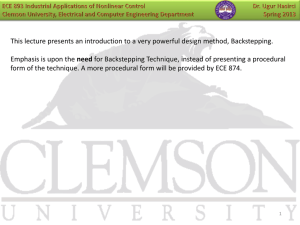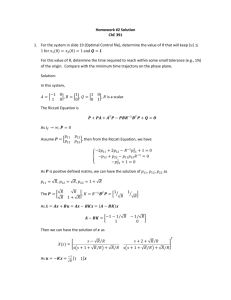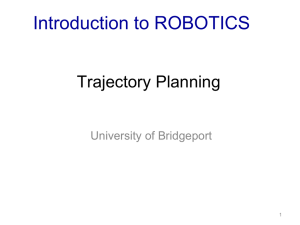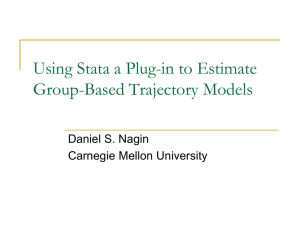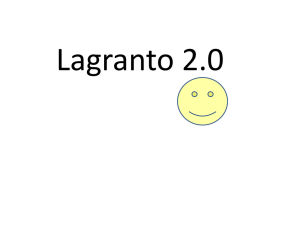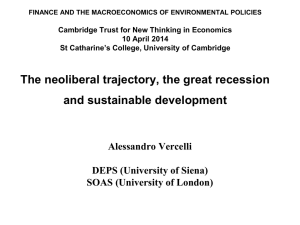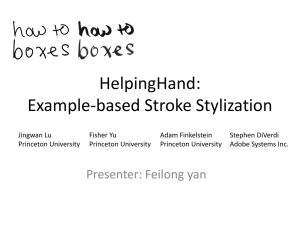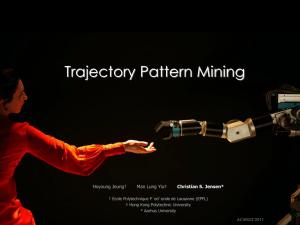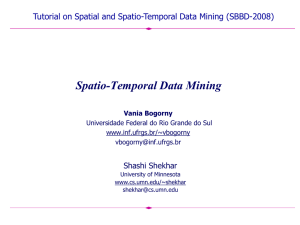Trajectories
advertisement
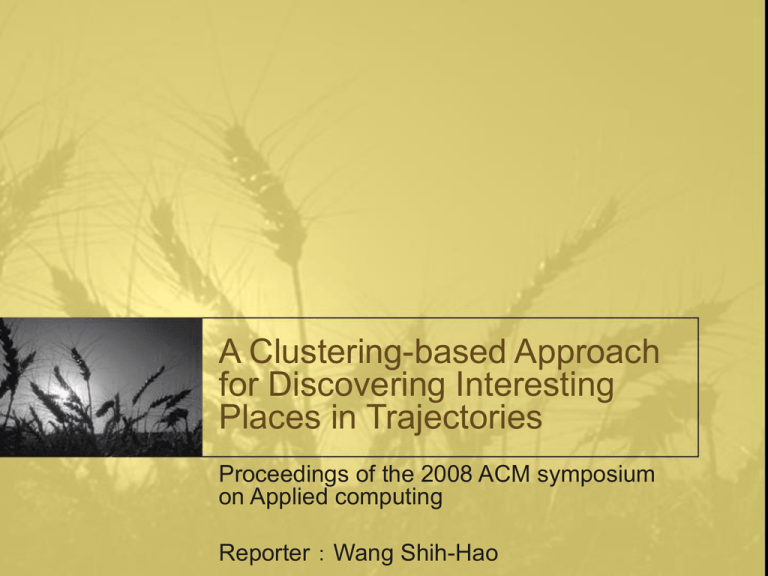
A Clustering-based Approach for Discovering Interesting Places in Trajectories Proceedings of the 2008 ACM symposium on Applied computing Reporter:Wang Shih-Hao Outline • Introduction • A Concept of Trajectory • Method • Experiment and Result • Conclusion Introduction • The large amount of trajectory data produced by mobile devices, there is an increasing need for mechanisms to extract knowledge from this data. • Most existing works have focused on the geometric properties of trajectories Introduction • Present an alternative solution with the capability of finding interesting places that are not expected by the user. • Compare the two different approaches with experiments on real data and show that the computation of stops using the concept of speed. A Concept of Trajectory • Trajectory Sample:A trajectory sample is a list of space-time points(a set of stops and moves) p 0 x 0 , y 0 , t 0 , p 1 x 1 , y 1 , t 1 ,..., p N x N , y N , t N • Single raw trajectory and single semantic trajectory A Concept of Trajectory • Stops represent the important places of a trajectory where the moving object has stayed for a minimal amount of time. • Two kinds of stop:Candidate Stop and Unknown Stop • Candidate Stop: A candidate stop C is a tuple ( R C , C ), where R C is a topologically closed polygon in 2 and C is a strictly positive real number • R C :geometry of the candidate stop • C :minimum duration A Concept of Trajectory • A trajectory should continuously intersect this feature in order to be considered a stop. • Unknown stop: is a cluster G k of T which does not intersect any R j of A for at least j , where C j R j , a candidate stop. j • Example of a trajectory with 2 stops and 2 unknown stops is Method • An algorithm named SMoT (Stops and Moves of Trajectories) has been provided to extract stops and moves from trajectory sample points. • Propose a speed-based spatio-temporal clustering approach (CB-SMoT) to find important places of trajectories Method Each trajectory t in T Yes Compute the clusters Set Clusters as empty Calculate Eps If p is a core point: Add neighbor in neighbors Set neighbors as a cluster Set all points in neighbors as processed Each unprocessed point p in t Yes No Find stops and moves No Each intersection with a different Rc with duration time: generate a stop Each subtrajectory which is not stop: If duration ≥ minTime generate an unknown stop Each cluster in clusters No Each subtrajectory which is not a stop Yes Generate a move Yes Experiments and Result • Examples: • Trajectory samples and buildings Experiments and Result • Trajectory samples and areas Experiment and Result • Trajectory X Buildings (minTime = 120s) Algorithm Stops Unknown Stops Time(s) SMoT 6 - 189 CB-SMoT(area = 0.3) 1 69 160 CB-SMoT(area = 0.35) 1 105 196 CB-SMoT(area = 0.4) 1 182 274 • Because CB-SMoT is based on speed, and the velocity of the trajectories in the stops found by SMoT was not lower enough to be considered as a stop (cluster) by CB-SMoT. Experiment and Result • Trajectory X Area and minTime = 300s Algorithm Stops Unknown Stops Time(s) SMoT 357 - 485 CB-SMoT(area = 0.3) 37 0 259 CB-SMoT(area = 0.35) 51 0 388 CB-SMoT(area = 0.4) 69 0 476 CB-SMoT(area = 0.45) 143 0 537 • The candidate stops are dense and cover the complete region • Because all trajectory points are located in one of the polygons that cover the complete area, no unknown stops were identified by CB-SMoT. Conclusion • A new spatio-temporal clustering algorithm, where the distance between points is calculated along over the trajectory, instead of the traditional euclidean distance • The discovery of interesting places which are not known a priory by the user


